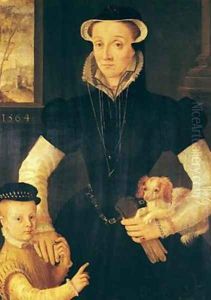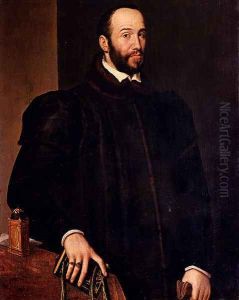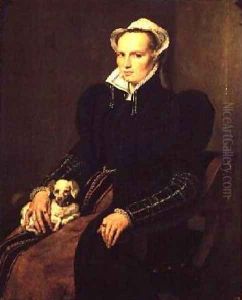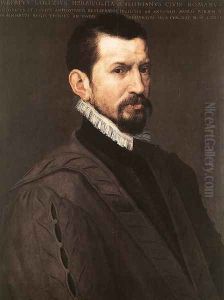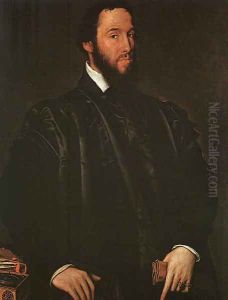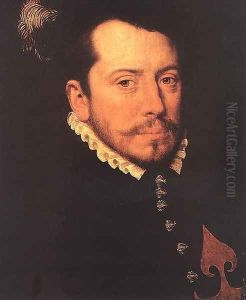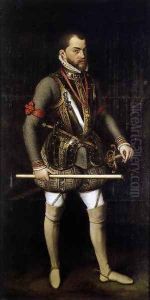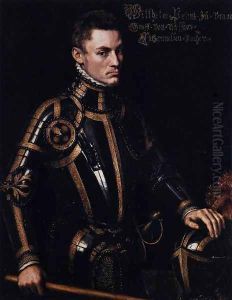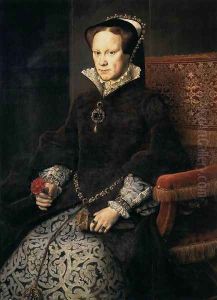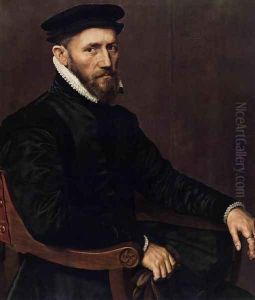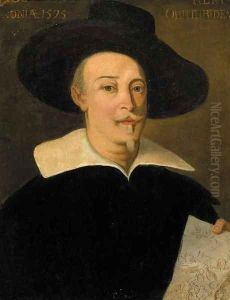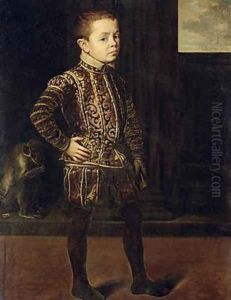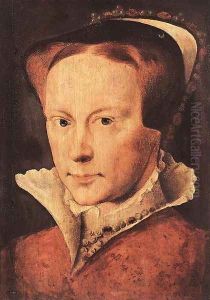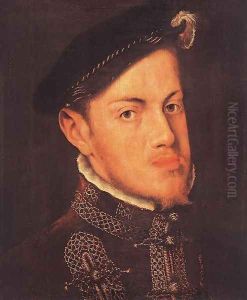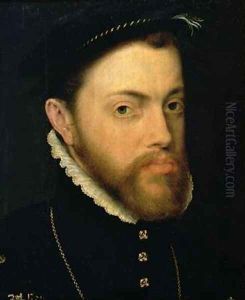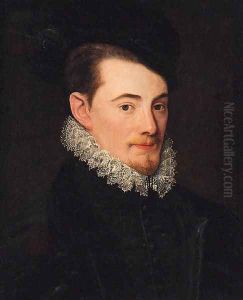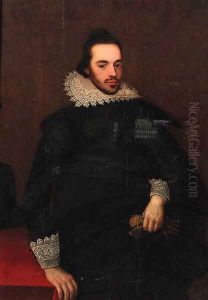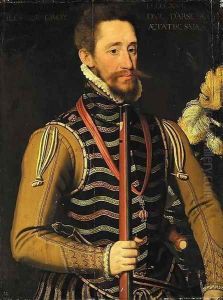Anthonis Mor Van Dashorst Paintings
Anthonis Mor van Dashorst, also known as Antonio Moro, Anthonis Mor, or by other variations, was a prominent portrait painter during the 16th century. Born in Utrecht, Netherlands, around 1519, Mor was one of the leading Northern European portrait artists of his time and was particularly recognized for his work at the Spanish court. His portraits are known for their sophisticated technique, psychological depth, and the dignified portrayal of his subjects.
Mor received his early training in the Low Countries and his style was influenced by earlier Netherlandish painters as well as by contemporaries such as Jan van Scorel. Mor's career began to flourish when he became a court painter in the Habsburg Netherlands, then under the regency of Mary of Hungary.
In the 1550s, Mor was sent to Spain by Mary, where he painted portraits of the Spanish royal family, most notably the famous portrait of King Philip II. This work gained him international fame and opened doors to other high-profile commissions. Mor's ability to capture the character and status of his sitters was highly valued, and he was much sought after by aristocracy throughout Europe.
After his successful period in Spain, Mor traveled to England in 1554, where he painted portraits of Queen Mary I of England and her husband, Philip II of Spain. Throughout the 1550s and 1560s, Mor continued to work for the Habsburgs and other noble families, traveling to Portugal and Italy as well as returning to his homeland.
Mor's later years are less documented, but it is believed that he returned to Utrecht where he continued to paint until his death in 1575. His legacy includes a number of pupils and followers who were influenced by his style and continued the tradition of Northern European portraiture. His work remains highly regarded for its contribution to the evolution of portrait painting and is held in numerous museum collections around the world.
